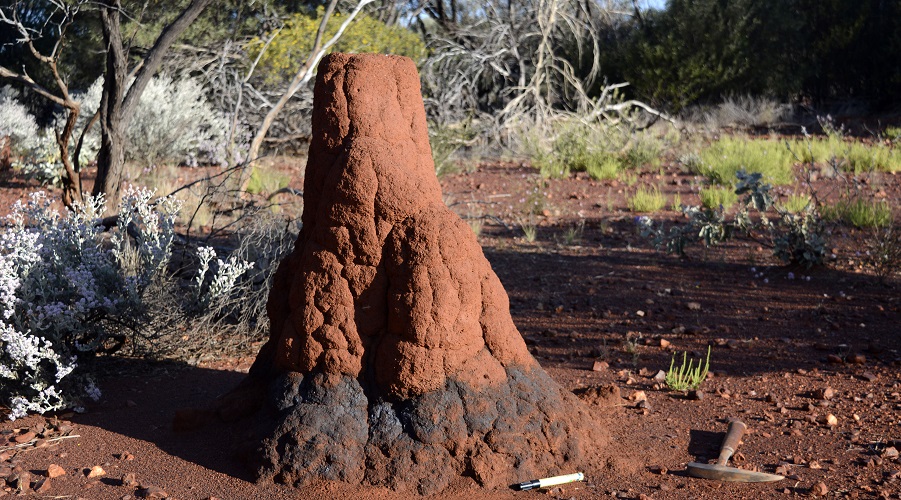
Researchers from Australia’s national science agency, CSIRO, conducted a study in the southern Pilbara region that led them to conclude that hidden metal deposits can be discovered using metallic blue crusts in soils and on termite mounds as signposts.
The scientists used new advances in sample analysis to show how metallic blue crusts, known as manganese crusts, display unique zinc signatures that indicate the presence of other base metals in the surrounding area.
The findings are considered key to support the world’s transition to a low emissions future
The manganese crusts are also found in rock and cave varnishes, making them an easily accessible exploration tool for base metals including nickel and cobalt.
“We’ve shown that analysing zinc isotopes found in manganese crusts have huge potential to be used to explore for these metal deposits, and others,” Sam Spinks, head of the research team, said in a media statement.
In their fieldwork, Spink’s group analysed termite mounds and soils close to a zinc-lead-silver deposit and compared these data to samples from elsewhere, to prove the connection.
“Zinc is commonly found in most base metal deposits, and over time, it is released and ends up in a range of natural materials such as soils, termite mounds and vegetation,” Spinks said. “The zinc is altered as it moves from the metal deposit to the surface, which has traditionally made it unreliable as an exploration tool, but we’ve been able to apply recent advances in data analysis to understand it in more detail.”
According to the expert, this new research shows that now it is possible to measure zinc variations, or isotopes, to accurately identify what metal deposit lies deep underground.
Comments
Ahmed Sani
I enjoy reading your articles, its enlightening and knowledgeable